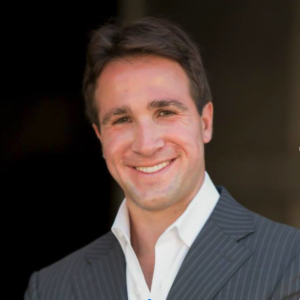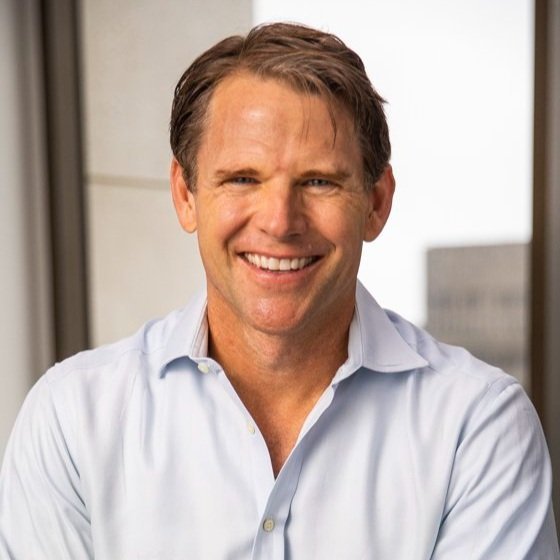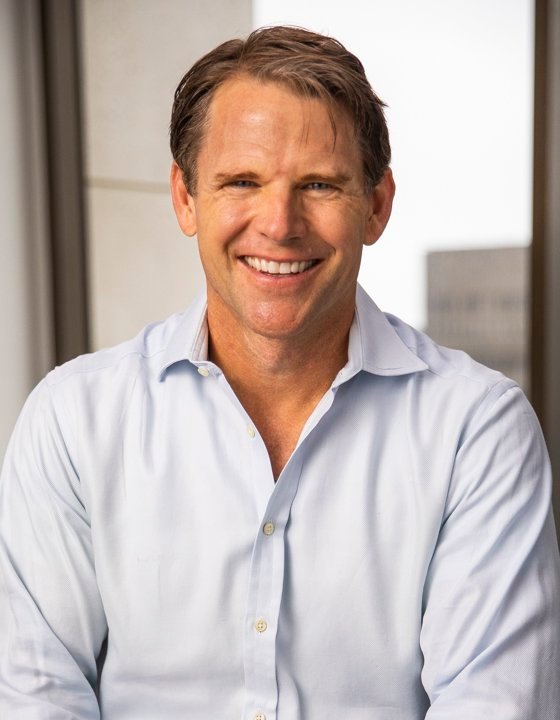I recently went one on one with Graham Weaver, founder and managing partner of Alpine Investors.
Adam: Thanks again for taking the time to share your advice. First things first, though, I am sure readers would love to learn more about you. How did you get here? What experiences, failures, setbacks or challenges have been most instrumental to your growth?
Graham: I grew up in Perrysburg, Ohio – a suburb of Toledo perhaps best known for supplying the auto industry. I’m the middle child of three; I have an older sister and a younger brother. My mother worked in fundraising for the University of Toledo, and my father started his own veterinary practice from scratch and built a great business from it with many loyal clients. Unfortunately, they divorced when I was 13 — a very formative age for anyone. At the time, their divorce felt like the Earth was shifting under me.
Our local library had a “Self-Help” section that caught my attention one day when I was really struggling and looking to make sense of the world. I checked out books on cassette tapes, covering everything from productivity hacks to setting life goals. Thankfully, my summer job in those years was mowing lawns, which gave me many hours to listen to the tapes on my Walkman. I was highly impressionable and eager to learn, and the self-help tapes had a tremendous and lasting impact on me. The setback of my family life changing quite dramatically actually prompted this habit that I consider the foundation of most of the good things in my life today because these tapes completely changed my mindset.
When I went to Princeton to get my undergraduate degree, I became interested in rowing, and I decided to put what I’d learned from those self-help tapes to good use. I ended up as captain of their national championship lightweight crew team despite never having rowed until I got on campus.
After graduating, I spent a few years on Wall Street before I went to Stanford to get my MBA. I started my own private equity company from my dorm room there, arranging my class schedule so I could fly to other cities to make deals using a “fundless sponsor” model. I signed up deals first — then, using a signed letter of intent, raised debt and equity to fund each deal. I got friends to invest small amounts, borrowed against my personal credit cards and raised the capital structure pretty much entirely in debt. That was in 1997.
In 2001, I formed a more formal private equity fund that became Alpine Investors. I kept trying to raise funds, but I would often not get past the first meeting because I was young and had no track record. It was a tough time, but I eventually found a few big investors who were supportive. When the Great Recession hit, it was probably one of the lowest, most stressful times of my life. I had a young family to support and people counting on me at work. Our leadership team at Alpine made a decision to spend a lot of time working on ourselves and our process, and we shifted to focusing exclusively on software and services and really zeroing in on talent and training.
That time of struggle and introspection was also invaluable, and it helped us turn everything around. Today we have eight funds with $8 billion under management, and putting people first remains our top priority.
Adam: In your experience, what are the keys to building a successful business?
Graham: People are at the root of all things good and all things bad when building a successful business. In nearly all cases, whenever we do a root-cause analysis, the answer comes down to — did we have the right person in the right role with the right amount of training?
Whether the answers to those questions are “yes” or “no” is often the tipping point between winning and losing in the business world. Unfortunately, I learned this from the mistakes that I’ve made along the way. We often had the wrong CEO in place at one of our companies – and if I could have realized earlier just how central talent is to a thriving business, it would have saved me a decade of heartache and stress!
Our fundamental belief is that financial returns come from people. They come from talent. Many investors might shy away from this because it’s hard to analyze and may not appear cleanly within a spreadsheet. If you hire carefully based on attributes versus experience and invest heavily in training, people create returns.
So, from this foundational belief, we hire young students right out of undergrad or MBA programs, and we spend a lot of time, energy, and money on training them in the way we do business. Our internal training programs are supplemented with about 20 independent executive coaches. Generally, any time we buy a business, we seek to put in our own management teams, and we’re very transparent about that. We bring in highly trained individuals to lead companies and add-on acquisitions, and we focus on leading indicator metrics such as employee net promoter scores – eNPS – knowing that companies whose employees would recommend their company to a friend are more likely to stay. Retention is often predictive of returns, whereas returns themselves are lagging indicators that are mostly only good for pointing fingers after the fact if they aren’t where you’d like them to be. They’re not a sufficient measure of how you should be running your business.
Adam: How does your firm approach leadership? What do you believe are the defining qualities of an effective leader? And how do you train and develop successful leaders?
Graham: Given our foundational focus on talent, leadership is obviously a major part of that.
Getting the right management team in place is the single most important investment decision we make. We hire directly out of business schools for our CEO-in-Training program, and we essentially build our own CEOs to eventually run our companies. Often, we appoint first-time CEOs in small acquisitions, and we’re very proud of that process. Because we hire for attributes instead of experience, we are able to bring a great deal of diversity to the C-Suite.
We are looking for people with a will to win, emotional intelligence, and self-awareness that will help them work well with their teams. These individuals have to have the grit to see things through after they inevitably get kicked in the teeth — which you can’t teach.
Valuing attributes, first and foremost, tends to work out better for us, and it also creates more value for society by building paths to becoming CEOs for people who may not have had such a path in the past.
Adam: What is your best advice on building, leading, and managing teams?
Graham: The top leaders at your company should be spending at least 30-50% of their time recruiting, training, or developing top talent. Leaders will almost always say people are important, but if you look at their calendars, they usually spend very little time — if any — working on recruiting or creating great cultures. Creating a great team and culture is the job of top leadership — not the job of HR.
You have to demand top people in every key role. If you have B people on the team, they can become cancerous for the company. In 28 years, I’ve never seen an A player report to a B player for any period of time, which basically means if you have a B as a department lead, then you have a B department. Making difficult decisions to remove underperformers is one of the most important jobs of a leader.
Nearly all of your rules, bureaucracy, and red tape are designed because you have the wrong people on your team. You can manage differently when you have a team of truly A players. For example, you can give away decision rights to them, which empowers them, makes them enjoy their work more, and allows you to move quickly and scale faster.
Top performers are ambitious folks, and they are amazing to work with. They can also be challenging to lead. They want ever-increasing roles, responsibility, and compensation, and it’s your job to make sure they have a path to continue growing in these areas. Anyone who has tried it can tell you this is a lot of work. It is not a one-size-fits-all management style. Each person has different goals, capabilities, and desires for their career path, but every hour and dollar you spend retaining your top people is 100% worth it.
Adam: What are your three best tips applicable to entrepreneurs and business leaders?
Graham: First — your top three hires are the most important decisions you will make. They are essentially your co-founders. They will be with you through thick and thin and fight with you during difficult times. Alpine only survived for the first 12 years because we had amazing early teammates. There is an expression that “a problem shared is a problem halved.” And I could not have shouldered all of Alpine’s problems without my partners.
Second — work with a coach. I thought it sounded somewhat silly when a friend first brought up this idea to me during the height of the Great Recession. I knew I wasn’t fundraising at that time, so I gave it a shot. Working with a coach forced me to confront the issues I was facing day-to-day rather than letting them fester and compound. I developed a muscle to step back, zoom out and think way ahead. We developed a rhythm of working ON our business – improving it and adding capabilities that would make us win several decades out – versus just working IN the business – doing deals, serving on boards, etc. Coaching offers a dedicated time every week to think. Deeply thinking and using imagination is a secret superpower most people never unleash.
Third — give yourself permission to dream. In 2009, we set three goals, which are still the guiding principles of Alpine today: (i) become the highest returning private equity firm of all time, (ii) be the place where the best people in the world would want to work and (iii) become a force for social good. All three of these goals were aspirational for us, and you might say we had no business setting them. But a funny thing happened when we did; we started to behave as though we had already achieved those goals. And we started making decisions consistent with them. Imagining what you want and seeing it in your mind can help you live it in real life.
Adam: What are the keys to leading a turnaround?
Graham: I’ve already talked a lot about talent, and not surprisingly, having the wrong people in the wrong roles at a company is typically the root cause of a company performing poorly. And getting the right people in the right places is almost always the first step to the solution.
In terms of strategy at a turnaround, one of the most magical strategic statements of all time comes from Dan and Chip Heath’s book, “Switch.” They write: “Find what is working and do more of that.” In a turnaround, people think the key to success is to run around and fix a bunch of things. But the opposite is true. You need to figure out what is working. Which customers are your ideal customers? What product lines are performing? Which employees can take on more responsibility?
When you have a sense of the bright spots, create one or two very clear and simple priorities for the year and the quarter, and most importantly — give your team permission to stop doing the things that aren’t on that list.
And finally, you have to over-communicate. George Bernard Shaw once said, “The greatest enemy of communication is the illusion that it has taken place.” Every person on your team needs to know the company’s top priorities and how their actions can support those priorities. Then, when you think you’ve said it enough, say it again.
Adam: What are your best tips on the topics of sales and marketing?
Graham: I try to go into every sale with an “offense deck” and a “defense deck.” The offense deck is the two to four key points I want to make sure to land. If you have ten points, you will have zero points. So, take the time to ask, “What are the one or two things I want the prospect to really understand and remember after this presentation?” And make sure to show those points with stories and examples.
The defense deck is a list of the top objections a prospect has that would cause them to NOT buy. Typically, they have already made those objections, or you know what they are from experience. The key is to bring these things up in the conversation proactively. For example, “I bet you are thinking that this is a lot of money to pay for XYZ.” And then proceed to tell the prospect why it is worth it. The reason to bring these up proactively is that you can put them on your terms and have the dialogue while you’re in the room (or on the Zoom, as may be the case these days), rather than the prospect deciding after the meeting that it was too expensive.
Finally, the best quote I’ve heard about sales came from Tony Robbins: “Sales is about transferring your conviction to the other person.” So, don’t forget to have conviction, and then make sure you are showing up with energy and enthusiasm to make sure the other person leaves with your levels of conviction! Buying is often not just logical but also emotional. Genuinely connecting with people as much as you can in the process can help you win.
Adam: How can leaders build winning organizational cultures?
Graham: Eighty percent of a culture is determined by who you hire. Clearly define and write out the cultural attributes you want in each person you hire – “humility, curiosity, will-to-win, empathy,” etc. – and then construct interview questions that will allow you to assess these attributes.
Get the wrong people off the bus. Nearly all leaders avoid making tough people decisions, but there is nothing more cancerous in an organization than people who are toxic to the culture or underperforming.
Give away decision rights. When you have the right people, empower them to make decisions. Be super clear about what decisions they can make on their own and which decisions require approval. For those decisions needing approval, tell them from whom they need approval and make this a seamless process.
Finally, solve for retention of your best people. This sounds obvious, but if you retain your best people, three things will happen: First, you will have longer-tenured employees who keep the company’s cultural values. Second, people will become accustomed to forming meaningful relationships because they know they will work together for extended periods.
Adam: What is the single best piece of advice you have ever received?
Graham: Ask yourself, “What would I do if I knew I wouldn’t fail?” And then go do that.
Adam: Is there anything else you would like to share?
Graham: I turned 50 this year, and the most important thing I learned in my first half-century is that the real battle in life is an internal one. Before I could become a good leader, I had to first learn to manage myself. I had to understand and face my own fears, doubts, and limiting beliefs. I had to give myself permission to create goals that I had no idea how I was going to achieve. And I had to show up as the best version of myself for myself first so that I could then give to others.
Time spent working on yourself is the highest returning investment you will ever make. For me, that looked like listening to self-help audio tapes, journaling nearly every day, meditating, talking to an executive coach every week, taking time to get enough sleep, working out every day, cutting out alcohol, and eating well. That might sound like obvious stuff, but thousands of more “urgent” things keep us from investing in ourselves. The magic is to make the “important” things “urgent” by using your calendar and creating daily habits.
And when you’re at your very best, you can do nearly anything you set out to do.









